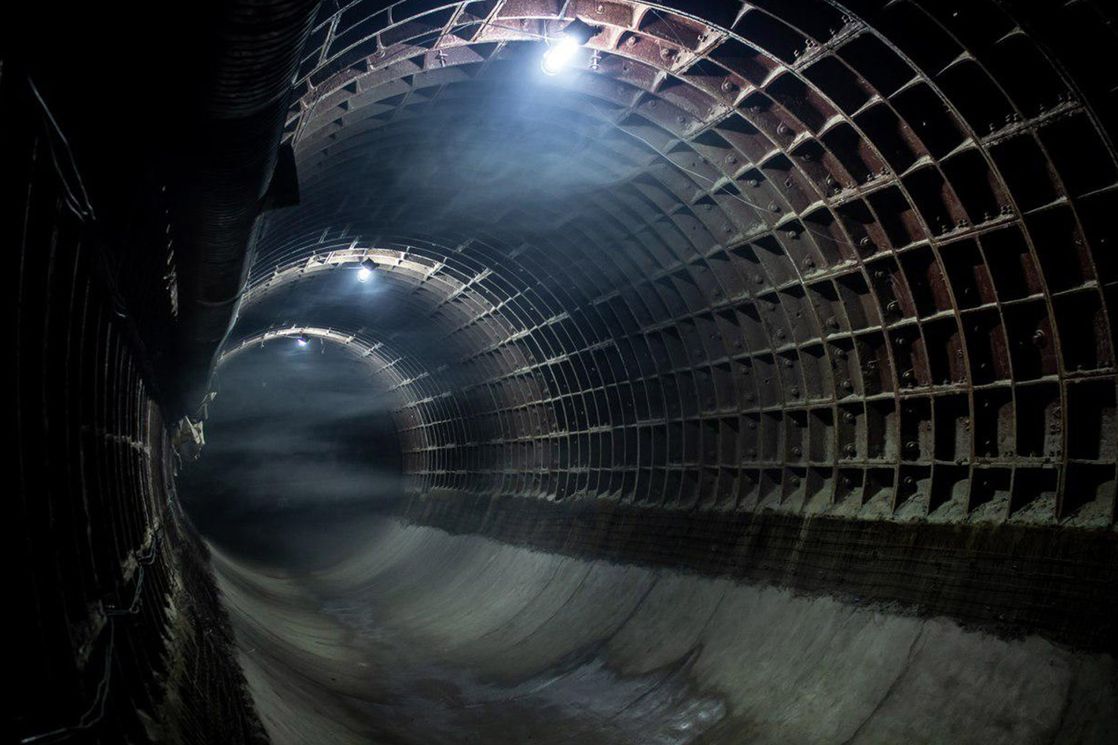Strictly Confidential—Moscow Bunkers
What is the first thing that comes to mind when you think of a ‘bunker’? These once-hidden places evoke the Cold War, dictators, mystery and danger. Several decades ago, it was impossible for most people to enter them. Today, some bunkers have been turned into museums and are extremely popular attractions for those curious about the enigmas and history of the 20th century.
The Deepest: Bunker-42
Bunker-42 is situated at a depth of 65 metres underground—about the height of an 18-floor building. This 7,000 m2 military facility was built to survive a nuclear bomb. Soon after the United States began testing the new type of weapon, Stalin ordered the construction of the bunker to serve the senior leadership of the country. As such, it was highly confidential and security restricted—pedestrians walking nearby had little idea of what was hidden under their feet.
Construction began in 1950 and was carried out by Mosmetrostroy, the company that built the Moscow underground. The same workers who were building the Taganskaya metro line were tasked with this secret mission, without even knowing they were building a bunker. The carefully chosen location was in the city centre near the Kremlin, allowing the higher-ups to flee from a nuclear attack at short notice. If the unthinkable had happened, the government would have moved to this secure place and ruled the country (or what remained of it) from this bunker, which was equipped with enough supplies to last several months. In addition to its existing food stores, the bunker could be resupplied via a hidden entrance to Taganskaya metro station (the hall still exists today but the door is sealed).
Over the following several decades, the once-powerful shelter became out-of-date as significantly more powerful nuclear weapons were developed. Just like other facilities of this kind, such as Stalin's bunker in Samara, the ‘Burlington’ complex in England, or China’s 816 Nuclear Military Plant, Bunker-42 has been totally declassified. In 2006, it was turned into a museum. So, what can visitors expect to see today? Located in a residential quarter with its entrance inside an ordinary building, it's still quite difficult to spot. Just as it used to be, no-one can get inside without a ticket styled as an identity pass. Visitors have to call security at the closed gate and ask for permission to enter, and only those with prior approval (ie from signing up for a tour) will be let in. You'll be taken down the stairs on the -18th floor and along the numerous, winding tunnels, which were designed to dissipate an atomic blast. Some curious compartments, such as the General Secretary’s study, preserve the Cold-War atmosphere. Stalin himself never visited the site—it was completed after his death and handed over to the Ministry of Defence. The last part of the tour exhibits models of nuclear weapons, encouraging visitors to think about the fragility of the world.
Address: 11 5th Kotelnetchesky Pereulok
Nearest metro station: Taganskaya
Opening hours: only group tours are available; choose an excursion to join.
Tickets: 2000 rub
The Most Authentic: Bunker 703
At a depth of 43 metres, this bunker is not as deep as Bunker-42, but it makes up for it with its authenticity. Built in the 1940s, it served the Ministry of Foreign Affairs for more than a half a century, before becoming outdated like many other facilities of its kind. No longer suitable for storing secret documents, the bunker was turned into a fortification museum with an emphasis on veracity.
Everything is still as it used to be: step behind the massive doors and you can see files, photo documents, chemical survivability features, defensive construction models, Soviet-era equipment, a life-support system, and an old (and very noisy) air-conditioner. Everything is carefully kept in working condition, giving visitors a glimpse of the reality of military and civil defence.
Address: 14/1 2nd Novokuznetsky Pereulok
Nearest metro station: Paveletskaya
Opening hours: only group tours are available; choose an excursion to join. You can book an excursion here.
Tickets: English tour – 1400 rub
Please note that there is no lift—you have to walk 42 metres down and up again.
The Oldest: Izmailovo
This bunker (or perhaps more accurately ‘shelter’, given that it is only 15 metres deep) was built in the 1930s together with the Stadium of Nations. The stadium was to host sports events and military parades, and as such required a shelter for senior officials as a part of its security programme.
It is said that Stalin visited this place twice—in April in 1940, likely to inspect the site, and in November in 1941, to spend a few days there. However, these facts are disputed by historians.
Address: 80/1 Sovetskaya Ulitsa
Nearest metro station: Cherkizovskaya
Opening hours: only group tours are available; choose an excursion to join. You can book an excursion here.
Tickets: 1600 rub
Text by Olga Nozdrina, first-year master’s student of ‘Contemporary History Studies in History Instruction at Secondary Schools’, intern at the HSE University English website team



